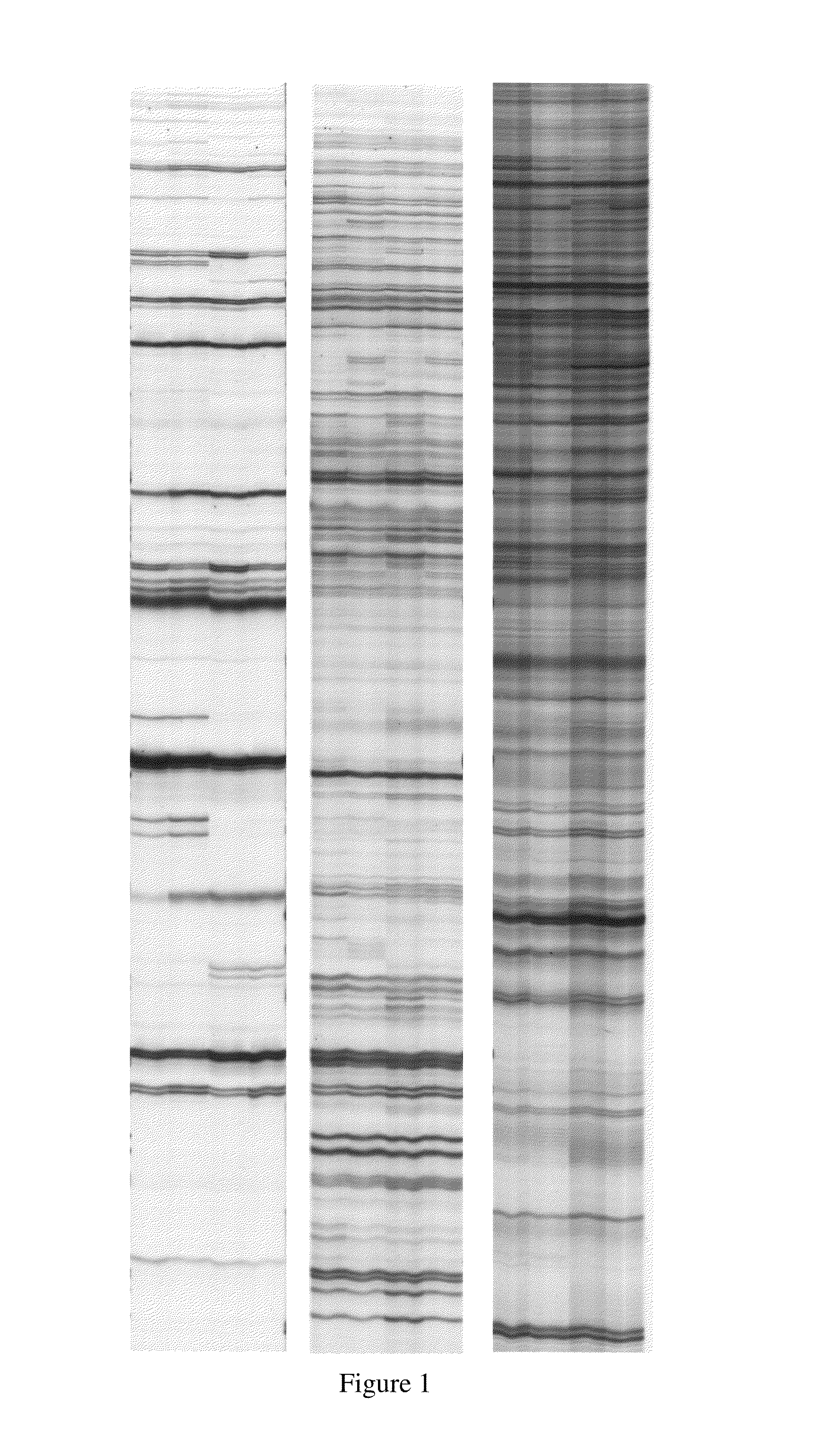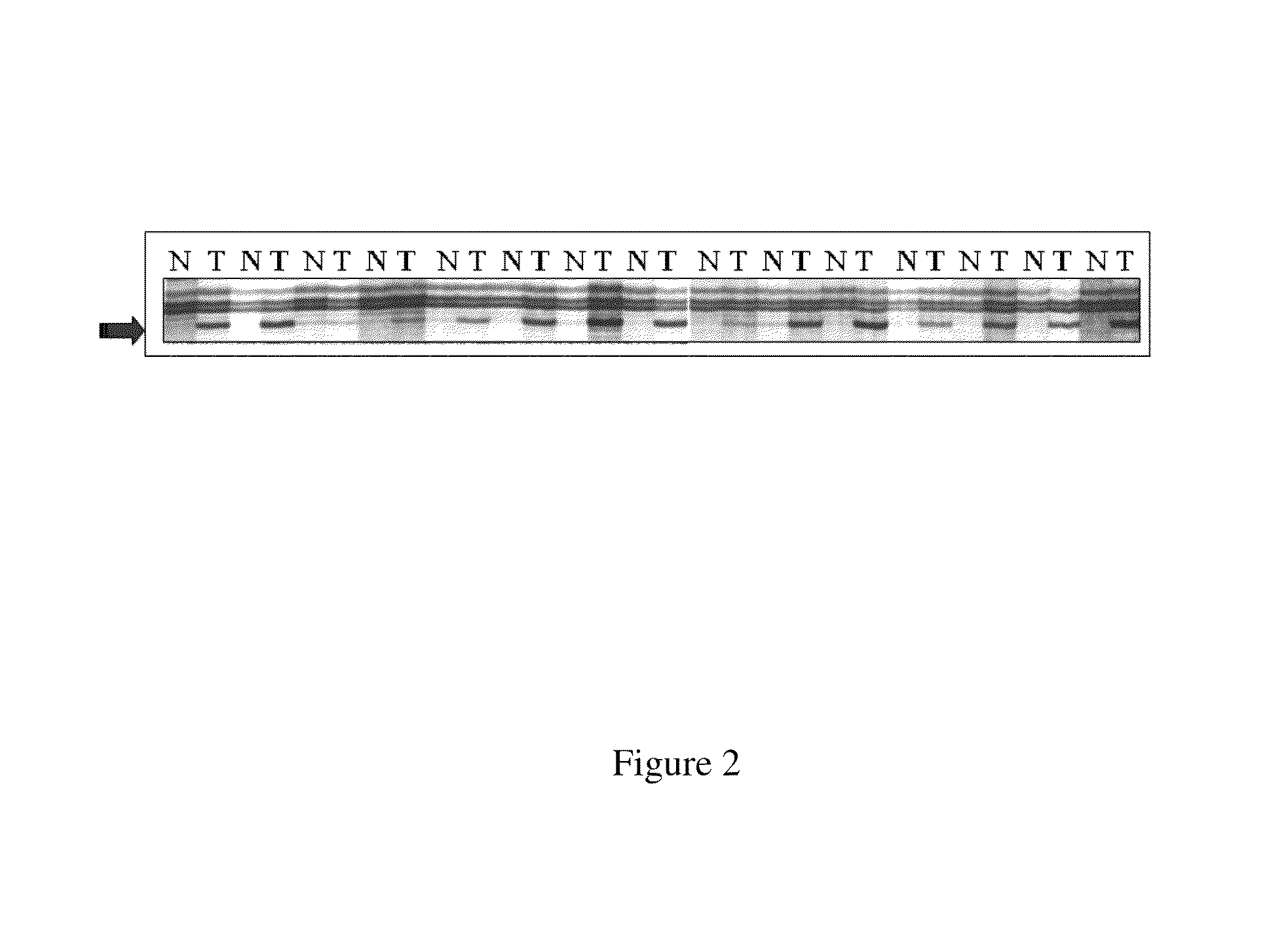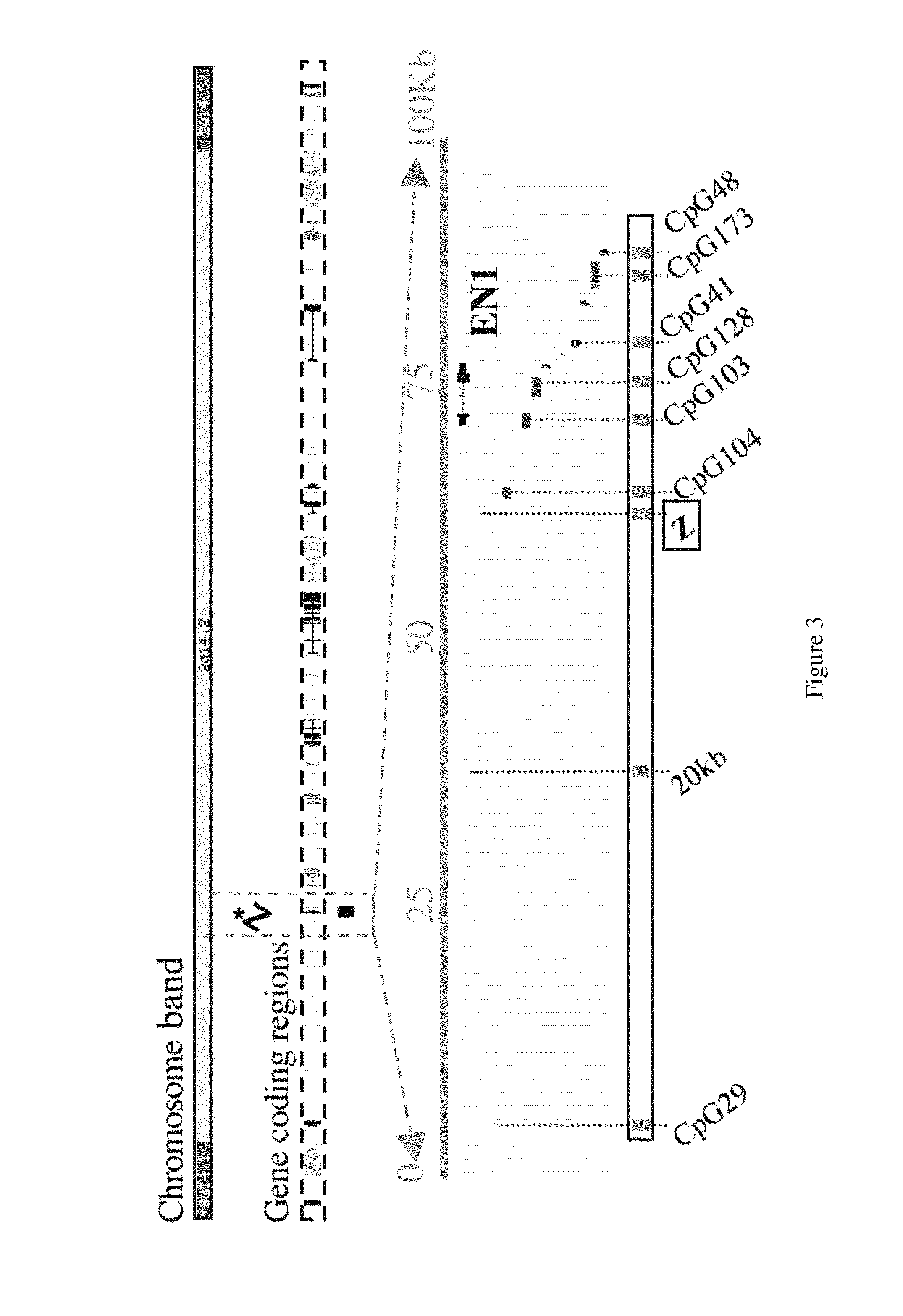Method of diagnosing cancer and reagents therefor
a cancer and reagent technology, applied in the field of cancer diagnosis and reagents therefor, can solve the problems of difficult diagnosis of cancer, increased cost, and clear as to the extent and nature of epigenetic changes, and achieve the effect of facilitating the determination of the expression level of nucleic acids
- Summary
- Abstract
- Description
- Claims
- Application Information
AI Technical Summary
Benefits of technology
Problems solved by technology
Method used
Image
Examples
example 1
Identification of a Hypermethylated Region of Chromosome 2 in Colon Cancer
[0617]Samples used in the identification of hypermethylated DNA in colon cancer were derived from 112 colorectal carcinomas with paired non-adjacent areas of normal colonic mucosa. Samples were collected as and frozen within 2 hours of removal and stored at −80° C. until analysis. All samples were obtained from the Hospital de la Santa Creu u Sant Pau (Barcelona, Spain).
[0618]Using the global methylation approach, amplification of inter-methylated sites (AIMS) assay (essentially as described in Frigole et al., Nucleic Acids Res. 30: e28, 2002) the inventors identified a SmaI fragment, designated the Z fragment, that was differentially methylated in 71 out of 112 (63%) of colorectal / normal tumor matched pairs. An example of a gel showing an AIMS assay identifying the Z band is shown in FIGS. 1 and 2.
[0619]The Z fragment was isolated from an acrylamide gel, sequenced and mapped to human Chromosome 2 map position...
example 2
DNA Hypermethylation of CpG Islands Neighbouring Engrailed-1
2.1 Methods
Bisulfite Treatment
[0621]DNA was extracted from the HCT116 / SW480 cells using the Puregene extraction kit (Gentra Systems) and Trizol reagent (Invitrogen) from colorectal cancer or normal matched samples according to the manufacturer's protocol. The bisulfite reaction was carried out using 2 μg of restricted DNA for 16 h at 55° C. under conditions essentially as previously described (Clark et al., Nuc. Acids Res., 22: 2990-2997, 1994). After neutralization, the bisulphite treated DNA was ethanol precipitated, dried, resuspended in 50 μl of H2O and stored at −20° C. Approximately 2 μl of DNA was used for each of the nested PCR amplifications. The primers used for the amplifications are set forth in SEQ ID NOs: 71 to SEQ ID NO: 198. The combinations used are described herein. At least three independent PCR reactions were performed to ensure a representative methylation profile.
Direct PCR Sequence Analysis
[0622]Poole...
example 3
DNA Methylation Across Chromosome 2q14.2 in Cancer
[0630]The analysis of the methylation status of DNA on either side of the 83 Kb methylated region described in Example 2 was then extended to determine the length of the differentially methylated region and to define the boundaries of the CpG island hypermethylation across the Chromosome 2q14.2 cytogenetic band. As shown in FIGS. 8a and 8b, Chromosome 2q14.2 is a 4 Mb region that is both gene rich and rich in CpG islands.
[0631]FIG. 8c shows the locations of defined and predicted genes and associated CpG islands localized to Chromosome 2q14.2. Ten defined genes reside in 2q14.2; of these eight have CpG island associated promoters, one (GLI2) has a 3′ CpG island and MARCO has no associated CpG island.
[0632]To determine the methylation status of Chromosome 2q14.2 direct bisulfite PCR sequencing and clonal analysis were used to analyze CpG islands associated with known genes (eight in total), in addition to a number of intervening CpG is...
PUM
| Property | Measurement | Unit |
|---|---|---|
| temperature | aaaaa | aaaaa |
Abstract
Description
Claims
Application Information
 Login to View More
Login to View More - R&D
- Intellectual Property
- Life Sciences
- Materials
- Tech Scout
- Unparalleled Data Quality
- Higher Quality Content
- 60% Fewer Hallucinations
Browse by: Latest US Patents, China's latest patents, Technical Efficacy Thesaurus, Application Domain, Technology Topic, Popular Technical Reports.
© 2025 PatSnap. All rights reserved.Legal|Privacy policy|Modern Slavery Act Transparency Statement|Sitemap|About US| Contact US: help@patsnap.com



